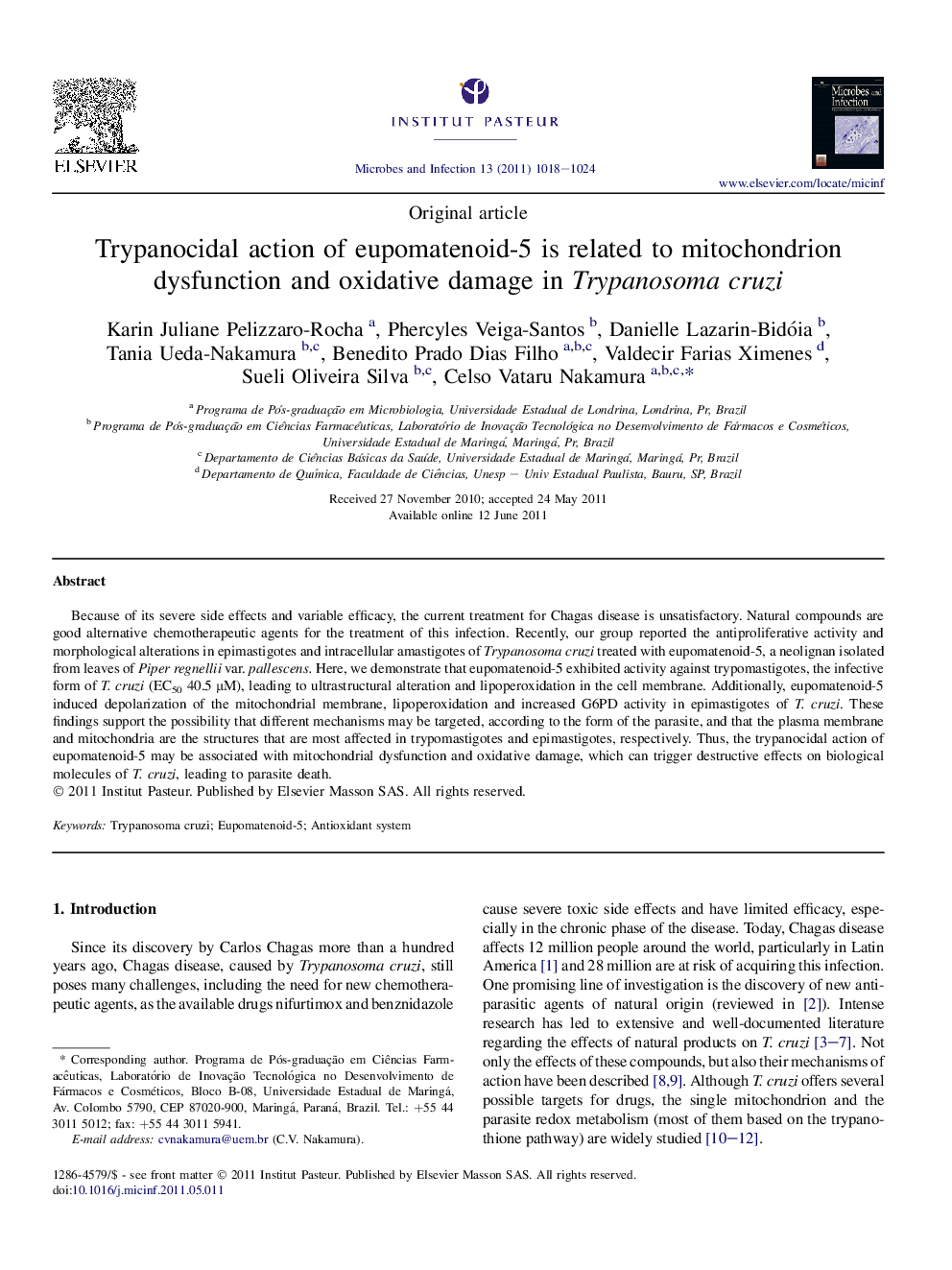| Article ID | Journal | Published Year | Pages | File Type |
|---|---|---|---|---|
| 6135930 | Microbes and Infection | 2011 | 7 Pages |
Abstract
Because of its severe side effects and variable efficacy, the current treatment for Chagas disease is unsatisfactory. Natural compounds are good alternative chemotherapeutic agents for the treatment of this infection. Recently, our group reported the antiproliferative activity and morphological alterations in epimastigotes and intracellular amastigotes of Trypanosoma cruzi treated with eupomatenoid-5, a neolignan isolated from leaves of Piper regnellii var. pallescens. Here, we demonstrate that eupomatenoid-5 exhibited activity against trypomastigotes, the infective form of T. cruzi (EC50 40.5 μM), leading to ultrastructural alteration and lipoperoxidation in the cell membrane. Additionally, eupomatenoid-5 induced depolarization of the mitochondrial membrane, lipoperoxidation and increased G6PD activity in epimastigotes of T. cruzi. These findings support the possibility that different mechanisms may be targeted, according to the form of the parasite, and that the plasma membrane and mitochondria are the structures that are most affected in trypomastigotes and epimastigotes, respectively. Thus, the trypanocidal action of eupomatenoid-5 may be associated with mitochondrial dysfunction and oxidative damage, which can trigger destructive effects on biological molecules of T. cruzi, leading to parasite death.
Keywords
Related Topics
Life Sciences
Immunology and Microbiology
Immunology
Authors
Karin Juliane Pelizzaro-Rocha, Phercyles Veiga-Santos, Danielle Lazarin-Bidóia, Tania Ueda-Nakamura, Benedito Prado Dias Filho, Valdecir Farias Ximenes, Sueli Oliveira Silva, Celso Vataru Nakamura,
